
Join the Debullshified Movement
Your Weekly Dose of No-Nonsense Insights
Welcome to Debullshified, where we strip away the jargon and deliver smart, simple insights to help you navigate the business world. No fluff, just good stuff.
- MEME of The Week; because we all need a laugh
- Metric Highlight of The Week; de-bullshi-fied description of metrics, so we can make sense of the world
- Life Hack of The Week; some best-friend-style inspiration that tells it life it is
- Real-Life Joke of The Week; the best section of this email with some face-palm worthy real-life
Current Subscribers: 186
Latest Editions
8th Edition: Achievers Choose to Focus. And you?
Hey. Have you ever felt ridiculously overwhelmed by the idea that you have to hop from task to task and that it’s OK for others to just interrupt you randomly?
I have…
And I can’t help but notice that the more obvious the evidence against this practice, the more people do it…
We’ll always advocate against it, so if there are people in your life (or work) who can benefit from being told off, send them our way. It’s one of the subjects we’ll never get tired of talking about.
MEME of the week
Author’s Note: I’m your best friend. here to remind you that it’s FriYAY!

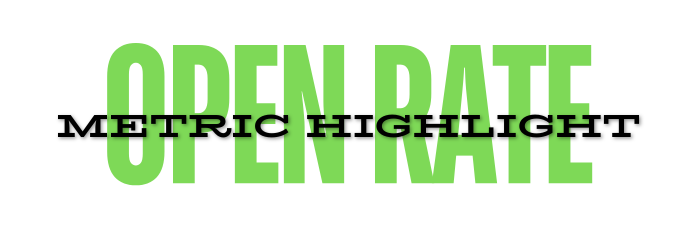
Since we realised that we can communicate with our audiences via email, it has become a huge part of marketing, and rightfully so.
Email is unintrusive, you can read it or ignore it, unsubscribe, or even block. For once, you’re actually in control of whether or not you pay attention.
In comparison with article ads, billboards, TV ads, and other type of promotional comms, email is a genuinely fantastic way to communicate with people.
But, us marketers, need to know if we are hitting the mark. How do we track this? By tracking Open Rate and Click-Through rate. We’ll deal with click-through in the next edition of Debullshified. For now, let’s focus on Open Rate.
Open Rate is the percentage of people who open the emails you send. It’s a great way to know if your subject line resonates with your audience.
Buuuuuuut…
For the past 3 years this metric has been unreliable and it’s shocking that we’re still taking it at face value.
On the 20th of September, 2021 Apple announced Mail Privacy Protection. An absolutely marvellous move in the era of cyber crime.
But it messed up with open rates… If you want the full details, these guys have a great article on it.
In summary, however, the privacy protection falsely increases the open rate metric that your mail system is going to report. Some reports have suggested that the increase is as large as 20%.
So, if your open rate shows as 50%, in reality, it could be as low as 30%. The thing is – you can’t know…
Why does it matter?
Because Apple mail has a huge market share…
So, if you’ll measure your email’s success, find another way. Perhaps a regular survey, a great value offer, or a video link?
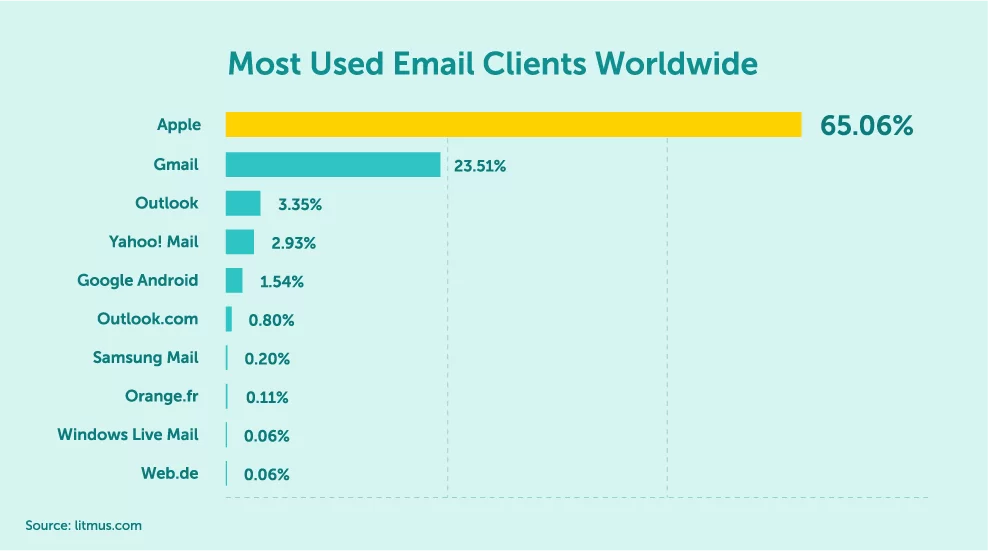
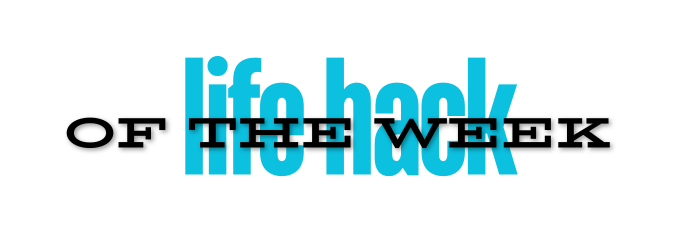
FOCUS!
Multitasking is for amateurs.
Do you know how multitasking became a thing? It was when every Tom, Dick, and Harry started opening businesses.
Don’t get me wrong – entrepreneurship IS for everyone. Being an employer, however, is most certainly NOT.
I won’t be tracing back how so many remarkably unfit people were able to make profitable ventures, even though it’s an interesting topic. What concerns me is the aftermath.
“Ability to multitask” started popping up in job ads some 20 years ago and slowly took over the world. Why?
Because the world of business was flooded with people who are unable to focus if it was to save their lives. People who’s frantic chase of financial gains made them constantly buzzing as if plugged into a high-voltage socket.
Question: Do these people achieve more than those who focus?
Answer: Overwhelming and assertive NO.
Nevertheless, since they can’t focus, they started looking to surround themselves with other similar people (like attracts like), ultimately creating an avalanche of mediocrity.
If you, too, are being asked to multitask,
but deep inside you know it’s wrong,
YOU ARE RIGHT.Please don’t question yourself.
Hundreds of studies have proven (not merely supported a theory) that this behaviour leads to worse, not better results. Here are a few in case you need proof:
- Executive control of cognitive processes in task switching
- Multitasking During Simulated Car Driving
- Multicosts of Multitasking
- In class multitaskers have lower academic performance
But why don’t frantic entrepreneurs change if their approach is so obviously wrong?
Probably because on some deeper level where ethics are not completely dead, there’s a very reasonable and well-deserved imposter syndrome.
See, we often say that imposter syndrome is bad, but is it bad in every case?
The opposite of imposter syndrome gave us Trump, the Kardashians, and too many other examples that I cannot possibly list. So perhaps there’s something to be said about balance?
The truth we all secretly agree to but don’t dare say out loud is that not everyone should be able to achieve everything.
And I bet that if you look around, particularly in the workplace, you’ll find at least 20% of the people shouldn’t be at the positions they’re holding.
Which leads me to my main point.
Multitasking is not a flex. It’s an unfortunate requirement by people who shouldn’t be in a position to require anything.
Please, don’t be one of them.
If you’re going to grow, grow as a person of sound mind, able to focus, view a situation from all it’s angles, and chase riches in all aspects, NOT just financials.

As you may know last week was England’s general election which landed us here in the UK with a Labour party.
We’re not political, so don’t expect a comment on that.
That being said, however, this section can easily be all about politics and the jokes will be endless. The only reason we won’t just make it about political jokes is because this is by far the most expensive reality show we, regular people, are paying for and the jokes are just too expensive.
Nevertheless, I can’t bypass this without sharing. Firstly:
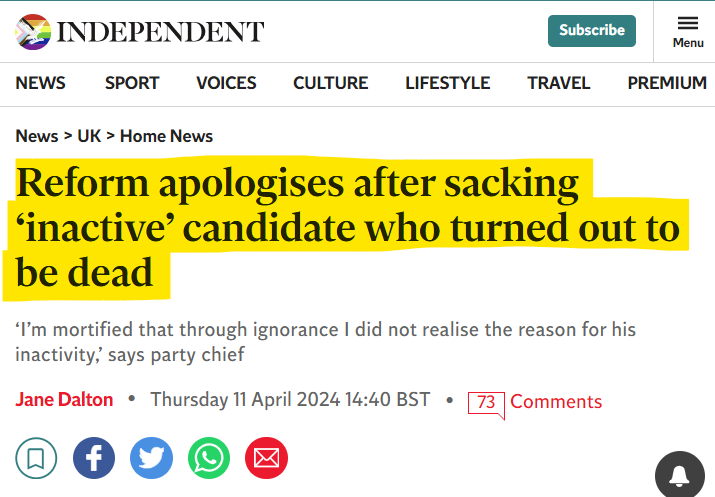
But wait! This article is just the gift that keeps on giving!
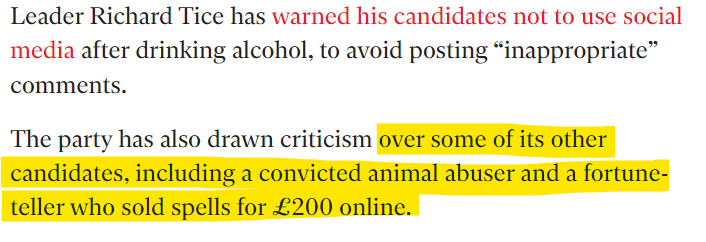
Listen, whoever you are, have you considered a career in politics? At this point I’m fairly certain that anyone who’s subscribed to this newsletter will be far better suited for office than the existing alternatives…

Yours truly,
Nina Alexander
P.S. Thanks for joining me today 😉 I’ll pop in your email soon again, but meanwhile, please stay awesome!
7th Edition: MEME of the week hits hard
Hey you,
Welcome to my Friday ramble. I have a task for you and you’ll find it in the “Life Hack of The Week” section. It’s quite a funky one, but I bet you haven’t considered that this is what might have been making you crazy.
On another topic – this week’s MEME just hits hard. Is it only me, or is being an adult really an experience that we could all happily do without?
BTW, just so you know – you can reach back to us by simply replying to this email. We’re very old school this way and would love to have a chat.
MEME of the week
Author’s Note: ‘nuff said…


In the first episode of the Debullshified podcast, I spoke about the 6 audiences that all businesses have to communicate with.
CPM is the metric that refers to audience 1, which is in essence, everyone.
See, if you are developing a brand, any brand, you must talk to anyone who’d listen. Just spread the word. You never know who might take interest in what you’re saying.
And, as the digital world would have it: you can’t know who you’re speaking to when you’re speaking to everyone. This is why in campaigns that aim to bring awareness, we’re not fussed about measuring the actions on people – all we want to do is get a reasonable cost to place our message in front of as many people as we can.
This is where CPM comes handy. If you are running an advertising campaign, CPM will define your cost per 1000 impressions. In simpler words – when your ad is shown to 1000 people, there will be a cost associated with that and this is your CPM.
I know what you’re thinking – why is it CPM and not Cost Per Thousand (CPT). Apparently CPM and CPT are interchangeable, because CPM comes from Cost Per Mille which in Latin would be cost per thousand. Confusing, right…
Anyway, here’s how it would be calculated, but don’t worry – you’ll never really need to do the math (advertising systems will do it for you).
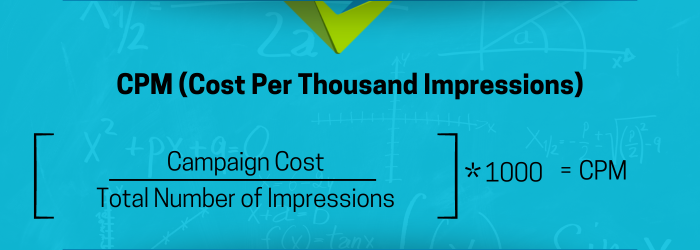
What’s the average CPM, you ask?
When it comes to measures like this one, the most important thing is to know the average and in the best case – to have a cost below industry average.
Why? Because that means that somehow the algorithm loves you and doesn’t feel that need to charge you as much so you can get eyeballs on your ads.
Please note that averages will vary significantly based on industry, ad type, platform, time of the year (more expensive around holidays when everyone is advertising), and other factors.
Here are some general averages just for guidance:
- Google Display Ads: $3.12 per thousand impressions
- Google Search Ads: $28.40 per thousand impressions
- Meta Ads (Facebook, Insta): $8.60 per thousand impressions
Use it backwards
The only way to use this metric, really, is backwards. If you have a set budget and you want to get in front of as many people as possible, use CPM to decide which platform to display ads on, and which to avoid.
Google Search Ads are always going to have higher cost because for people to see your ads they generally need to search for a relevant term, which means that there’s intention. On all the rest of the platforms your ads are effectively disrupting someone’s happy scrolling, but we already know that, don’t we…
As a marketer, I would like to take a moment and extend my apologies to everyone for being a part of the problem, not the solution. I promise that we, marketers, would rather do just about anything else but deal with ads. It’s not us, it’s corporate greed that dictates it, so please don’t hate us.

Are we, perhaps, all overreacting a little bit?
Before you turn defensive mode on, hear me out – I have to make a point.
When the art of theatre and film first came about, it wasn’t available to many, nor was it easily accessible. Some people who are still active members of today’s society have grown up without television…
But this isn’t about whether or not TV is ruining our brains. It’s about whether WE might be ruining the TV experience.
See, back in the day the only entertainment was books. In a book, the author has practically an unlimited space to describe the full range of emotions that a protagonist might be experiencing in any given situation.
On the screen, however, things are not quite as easy. Often books that take days or weeks to read are shown in a 90-minute long film.
So, if the director wants to elicit the same level of emotion a book would, then the actors better turn up the heating when showing emotions. That’s fine – it’s film art. It’s how it’s supposed to be.
What’s not supposed to happen, however, is for humans to copy actors’ reactions and start exaggerating their emotions as if they’re praying to win an Oscar…
Creator economy made this even worse. When everyone is armed with a camera and dedicating to hitting the numbers on likes and follows, ridiculously exaggerated emotions are flying all over the place.
No, it doesn’t look normal.
Yes, it looks fake.
Because it is. It’s a copied, not a genuine reaction.
Grown people are expressing emotion louder than naughty teenagers…
And if you don’t believe that humans copy emotional expressions from others, I urge you to read / listen to “Emotion – A Very Short Introduction” by Dylan Evans. This fantastic little book is a 3h Audible listen (if you have a subscription) and is more than eye-opening.
In the book, you’ll learn about the “wild pig” emotion, experienced exclusively by middle-aged men in ONE tribe only.
Back to my point and today’s life hack.
Do you remember how YOU express emotions? Pay some attention to how you cheer, how you express sadness, distress. Are these YOUR methods, or are they someone else’s?
The better you become at copying others, the farther away you move from yourself.
Personalising your emotional expression might be a fine place to start on your quest back to your authentic self.

This is a hilarious yet horrific story that makes a remarkably strong point:
Just because someone’s in power, doesn’t mean they know what they’re doing.
Case in point: Mao Zedong’s anti-sparrow campaign in late 1950s China.
With the slogan “Eliminate the Four Pests,” Mao declared war on sparrows, believing they were eating too much grain. Citizens were mobilised, rewarded for their kills, and soon, the sparrow population plummeted.
But, plot twist: without sparrows to keep them in check, locust populations exploded, ravaging crops far more than the sparrows ever did. The result? A catastrophic famine that led to the deaths of millions. Nature, it turns out, doesn’t take kindly to meddling.
So, next time you hear grand slogans from those in power, remember Mao and his sparrows. Their “brilliant” plans might just lead to disaster…
P.S. Yes, this is just as valid in corporate environment as in anything else…


Yours truly,
Nina Alexander
P.S. Thanks for joining me today 😉 I’ll pop in your email soon again, but meanwhile, please stay awesome!